Craft store aisles are filled to the brim with colorful skeins of yarn that can make your heart skip a beat. How does a knitter know where to start? Whether you have just started out in the world of yarn crafting or have proudly labeled yourself a crafter for years, there’s always more to learn, especially when it comes to acrylic yarn.
Did you know, specific to knitters, you can join our Knitting Patterns Only group to get knitting patterns, ask questions and gain inspiration for what to knit next. Or how about our VIP Knitting Group with Free knitting pattern access including vintage and Etsy designer patterns for less than $1 a month.
Learn all about acrylic yarn by reading this comprehensive guide. If you have any lingering questions about this ubiquitous type of yarn or its use, you’ve come to the right place for answers.
This comprehensive guide to acrylic yarn was produced in partnership with Mary Maxim (US site / Canadian site). For a limited time Mary Maxim is offering an exclusive special offer to Craft Gossip readers! Use the code SHIP25MM at checkout to get free shipping on orders over $25. Be sure to check out Mary Maxim’s premium supply of synthetic and natural yarns.
Table of Contents
- What is Acrylic Yarn?
- Benefits of Acrylic Yarn
- Disadvantages of Acrylic Yarn
- Acrylic Yarn Myths
- How to Use Acrylic Yarn
- Where to Buy Acrylic Yarn
What is Acrylic Yarn?
Acrylic yarn is one of the most common types of yarn. It’s a synthetic (man-made) material that’s friendly for all kinds of projects and skillsets. It is made from poly compounds (a form of plastic) that are melted and formed into thin strands. After that, the process of turning it into yarn is very similar to any other fiber: the strands are spun together into yarn, which are then wound into a skein that you would pick up at your local craft store.
Acrylic yarn is available in a rainbow of colors and is known for being strong and durable. If you have used yarn in crafts for a while, you might have already picked an acrylic version off the shelves without even realizing it.
Benefits of Acrylic Yarn
There are many reasons why acrylic yarn is so popular for crafting. Here are some pros and cons that will help you decide if this type of yarn is right for your next project.
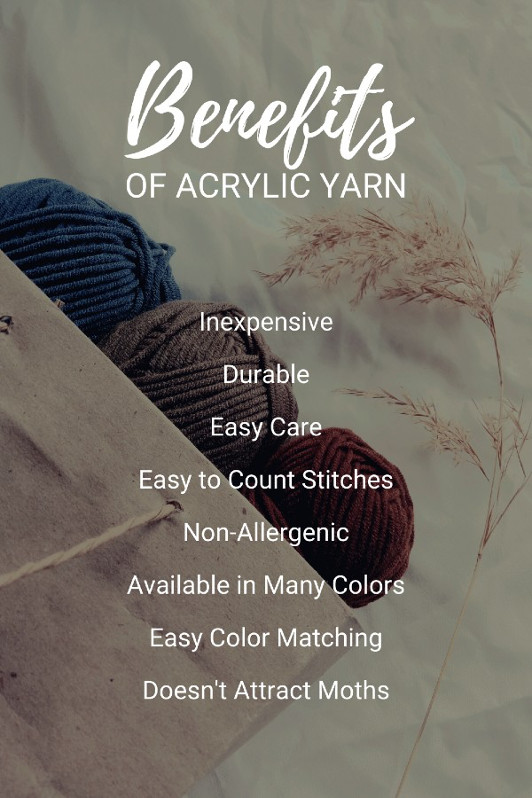
1. Acrylic Yarn is Inexpensive
It doesn’t cost much to make acrylic yarn because the synthetic materials used in production are affordable. That makes the yarn cheaper than skeins made from other materials, especially animal-based fibers like wool. Affordable production means a budget-friendly product, even when looking at higher-priced, premium acrylic options.
2. Acrylic Yarn Holds up Well
Synthetic fiber holds up great over time, which is attributable to its design. It’s an extremely durable material, which makes it perfect for long-term projects like hats and sweaters that people will wear for years. There’s little chance of it stretching out and losing shape, even during washes.
3. It is Available in Many Varieties
Mary Maxim offers a variety of soft and squishy acrylic yarns for all your needs, from baby yarns (which can be used for play blankets and accessories that won’t be worn to bed) to chunky, multicolored yarns perfect for accessories, and large balls of solid-color and variegated yarn for larger projects.
4. It Washes Easily
The only thing someone has to think about before tossing something made with acrylic yarn in the washing machine is how it’s protected. Any detergent can be used on it, as long as it’s washed it in an undergarment bag to prevent it from snagging on other clothes. Be sure to check your yarn for specific instructions on whether it can be tossed into the dryer.
The only thing you keep in mind is that you never want to iron pieces made from synthetic yarn or using high heat in the dryer. Doing so runs the risk of melting the fibers!
5. It Makes Clear Stitches
Sometimes because of the fuzziness or fiber content of a particular yarn, it can be difficult to see the individual stitches as you knit. Acrylic yarn has great stitch definition. This is helpful when you are learning to read your knitting or if you really want the stitches to pop in a textured or colorwork pattern.
6. Acrylic Yarn Doesn’t Trigger Allergies
Did you know that some people have a sensitivity to wool yarn and products created with wool? If you’ve ever felt irritation when working with wool, you aren’t alone! The specific protein fibers found in materials like wool can irritate people, but there’s still hope for future crafts. Acrylic fibers are allergen-free, making crafting more accessible and enjoyable for everyone.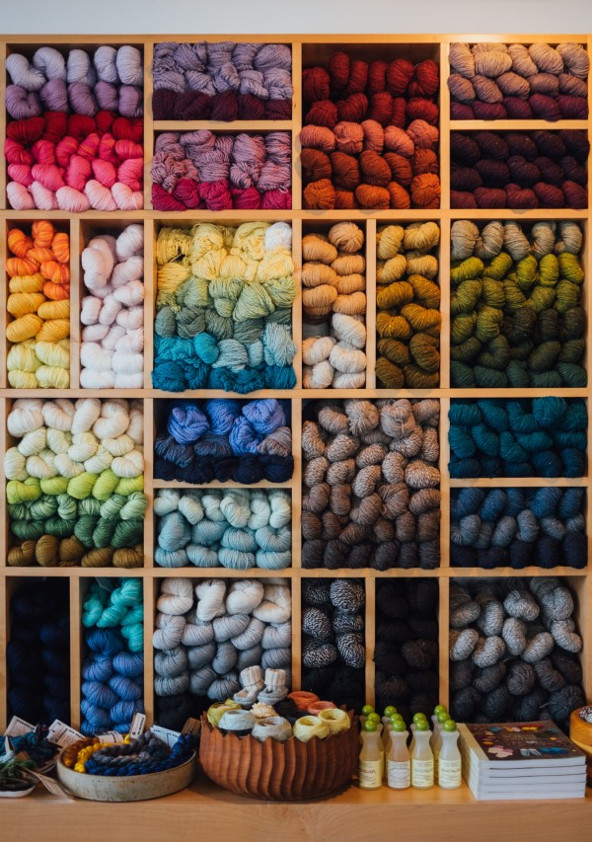
7. Acrylic Yarn Comes in Many Colors
Sometimes it’s hard to find yarn in the right color in some kinds of yarn, but there are many shades of acrylic yarn. It can be dyed into personalized hues, as well. More color options open up a world of potential craft projects!
8. It’s Easier to Color Match with Acrylic Yarn
Have you ever gone through the frustration of trying to find a skein of yarn that matched a current project you are working on, and the exact same yarn by the same brand is just slightly off in color? This happens because yarn is dyed in lots. Sometimes the color is “off” from lot to lot, or a batch of natural fiber yarn just doesn’t take the color well. This is far less likely to happen with acrylic yarn, because it consistently reacts to the dyes used. It also tends to be dyed in much larger lots, which equates to easier color matching when you run out of yarn for a particular project.
9. It’s Made with Synthetic Fibers
Moth larvae can destroy a project made with animal-based yarn because they eat the protein in the fibers. They’ll leave synthetic yarn alone, and acrylic projects will be safe even if moths happen to find them.
Disadvantages of Acrylic Yarn
Even with all its benefits, there are a few disadvantages of acrylic yarn that may surprise you. Keep reading to learn about these downsides, so you can judge whether it is right for your next project.
1. Acrylic Yarn Can Melt
Acrylic yarn and other synthetic fibers such as polyester have a low melting point, so this yarn isn’t the best option for kitchen accessories like potholders or trivets. For these projects, a better option would be cotton yarn.
Synthetic yarn should also be avoided in projects that require extra fire safety, such as baby clothes or accessories. For these projects, wool is a great choice, because it is self-extinguishing and does not melt.
2. Acrylic Yarn is Non-Absorbent
Acrylic fibers are hydrophobic, which means they repel water rather than absorb it. For this reason, acrylic yarn isn’t the best option for items that should soak up water, such as washcloths or towels. A better choice for these projects is a hydrophilic fiber such as cotton.
3. Inexpensive Acrylic Yarns Can Feel Rough
Acrylic yarn has a bad reputation for feeling rough. However, judging all acrylics as rough or itchy just because the cheapest yarns available have this quality is a mistake! Avoid the less-expensive brands and only purchase your yarn from trusted, name brand companies.
4. Acrylic Yarn Doesn’t Hold Heat Well
It’s true: wool and natural fibers hold heat better than acrylic fibers. Sweaters and cardigans made with acrylic fibers won’t be as warm. People still make these projects out of acrylic yarn all the time, though, when they are seeking a lighter piece or a good piece for layering. If you live in an area where the weather plummets to negative temperatures, you may prefer to knit or crochet with warmer yarns such as wool or a synthetic-wool blends.
I grabbed some Mary Maxim Maximum Value yarn in three colors to re-create a blanket sweater that I wear all the time around the house when I need a little extra warmth. Making it from acrylic yarn is fine because it’s an outer layer worn indoors, and I love that it will be more easily washable than a wool sweater.
Acrylic Yarn Myths
Rumors spread just as quickly about craft materials as they do about anything else! Read about these myths, or watch the video below, to tell fact from fiction.
https://www.youtube.com/watch?v=TGfd0WJjNV0
1. Myth: Acrylic Yarn is Always Itchy
Is acrylic yarn itchy?
Some people believe acrylic yarn is always itchy, but that rumor only exists because of the cheapest end of the yarn spectrum, as mentioned above. As long as you purchase your products from a business that prides itself on the quality of its yarn, you’ll get soft yarn with every purchase, regardless of what material is used.
2. Myth: Acrylic Yarn Pills Easily
Does acrylic yarn pill, like some brands of cotton yarn?
The only time you will run into this problem is if you get something cheap. High-quality yarn won’t pill, but you can also look for yarn specifically labeled “anti-pill” if you’re worried about wearing it down. You can also wash your finished projects inside out to retain quality.
3. Myth: It Doesn’t Dye
Can you dye acrylic yarn?
Many creative spirits enjoy dying yarn and fabrics before a project to make it more personalized. Acrylic yarn won’t stand in the way of your crafty aspirations. It absorbs dye and holds onto it for long-term colors that shine. Just be sure to use a “disperse dye” that is labeled for synthetic materials.
4. Myth: Acrylic Yarn Can’t Be Felted
Can you felt with acrylic yarn?
Felting, or, more accurately, fulling, is a process by which the fibers of the yarn are fused together, making a project shrink in size and causing the individual stitches to disappear. While that look can’t be achieved with acrylic yarn because of the lack of natural fibers, you can needle felt on acrylic yarn. Needle felting uses a special tool that helps attach fibers to each other, and it is possible to add this effect to a project knit with acrylic yarn.
5. Myth: Acrylic Yarn Contains Toxic Fibers
Is acrylic yarn safe?
Sometimes people are thrown off by the idea of chemicals in yarn, but not all chemicals are harmful. The main fiber in acrylic yarn is polyacrylonitrile, a polymer resin created in the place of wool to make a more affordable product. It’s harmless to handle, which is why it’s part of the worldwide production of yarn.
Here is a graphic to help you remember these acrylic yarn myths:
How to Use Acrylic Yarn
Acrylic yarn is generally quite easy to use with any knitting needles or crochet hooks you like, though you may find the yarn slides around a lot of metal needles. It can be used in all kinds of craft projects! Check out the list below for just a few ideas.
1. Acrylic Yarn Knitting Projects
The allergen-free nature of synthetic yarn makes it ideal for things like:
- Blankets to donate for kids in need
- Animal shelter blankets
- Hats for charity
- Shawls for the homeless
- Yarn bombing and other public artworks
- Holiday projects
It’s very affordable to buy acrylic yarn in bulk for large projects, which is another reason people use it so often when making things for charities.
2. Easy Crochet Patterns
Many crafters turn acrylic yarn into beautiful crochet projects, such as:
Softer yarn is best for things people wear, so any new-to-you yarn should be tested before using it for garments. With good yarn, the soft fibers won’t wear out when put to the test of being worn or jostled.
3. Fun Yarn Projects
Of course, the idea of knitting and crocheting may be intimidating if you do not have experience with these craft techniques. Pick up some acrylic yarn and try a few easy crafts like these:
- Wrapped flower pots
- Tassels for bookmarks or curtains
- Keychains
- Hanging bottle planters
There’s so much that you can do with yarn, especially acrylic yarn. It will last a long time and maintain its quality during any project, which makes it the perfect material for all kinds of projects.
Where Can I Buy Acrylic Yarn?
Make the smart choice to buy acrylic yarn from a business with experience in the industry. Mary Maxim is a premium yarn and craft store and it’s the best place to buy acrylic yarn online. There are full specs on every product and downloadable free projects to get started with. The positive reviews and years of success are just a few of the reasons why so many crafters rely on Mary Maxim for high-quality yarn and other craft supplies.
A couple of my favorite Mary Maxim acrylic yarns include Maximum Value, which comes in huge, 450-plus-yard balls, and tons of great colors; Marvelous Chunky, a fun multicolored yarn great for accessories (used on the headband shown above); and Prism, a multicolored yarn with a silky feel perfect for shawls.
Once you understand what acrylic yarn is, how to use it and the pros and cons, you can try it in your next crafting project. It’s reliable and easy to use, especially now that you’ve finished reading this comprehensive guide! So, how are you going to be using acrylic yarn in your next project?
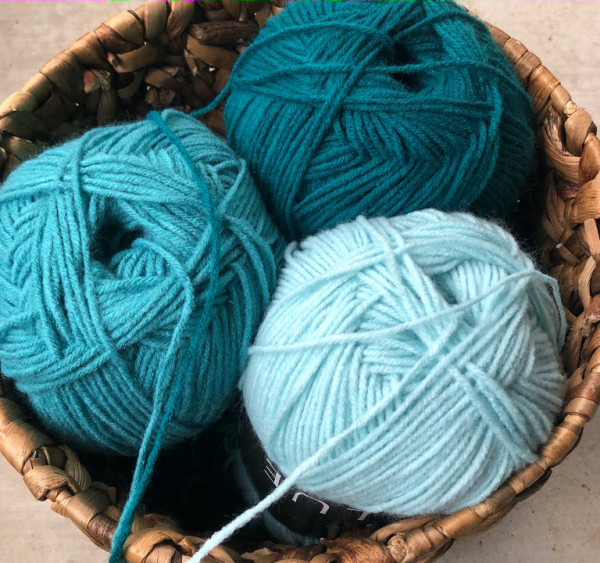
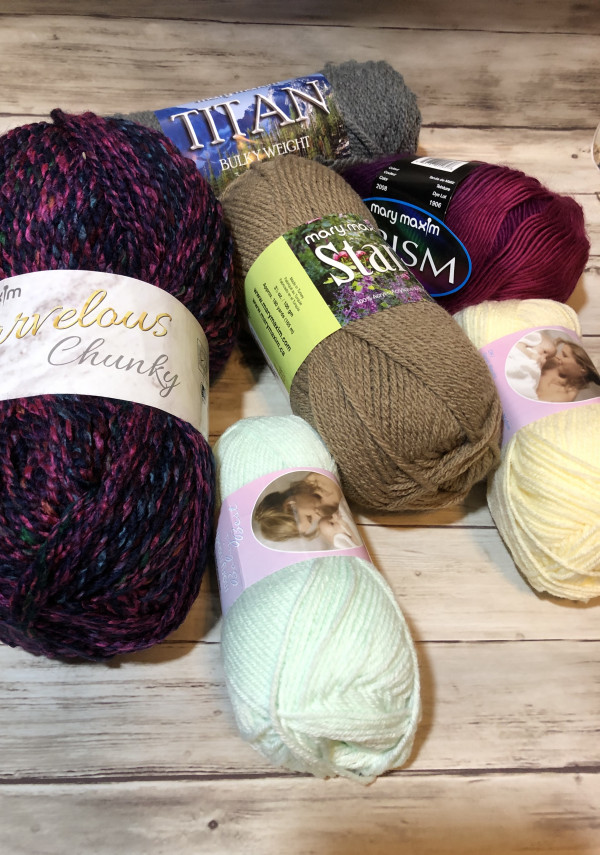
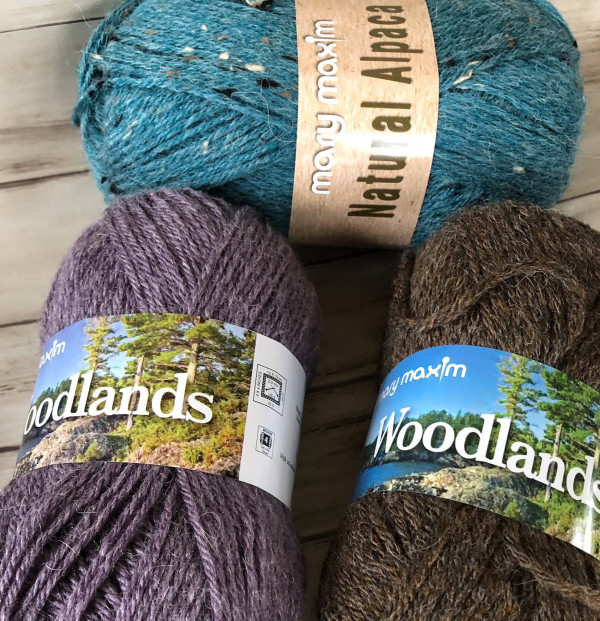


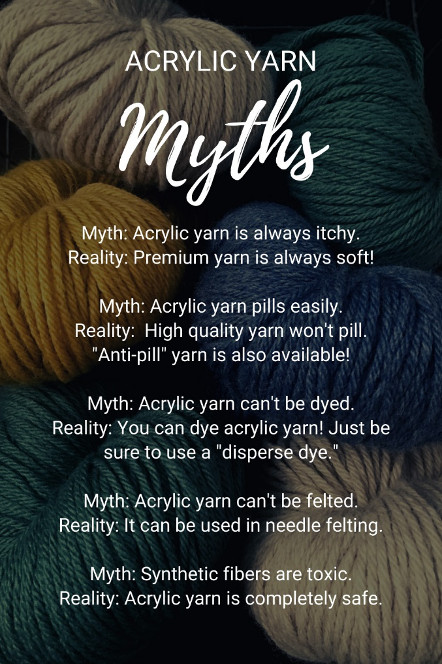
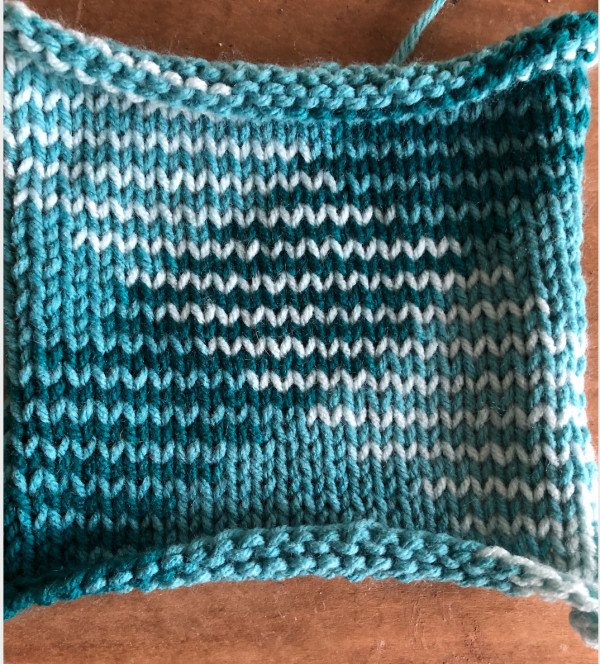

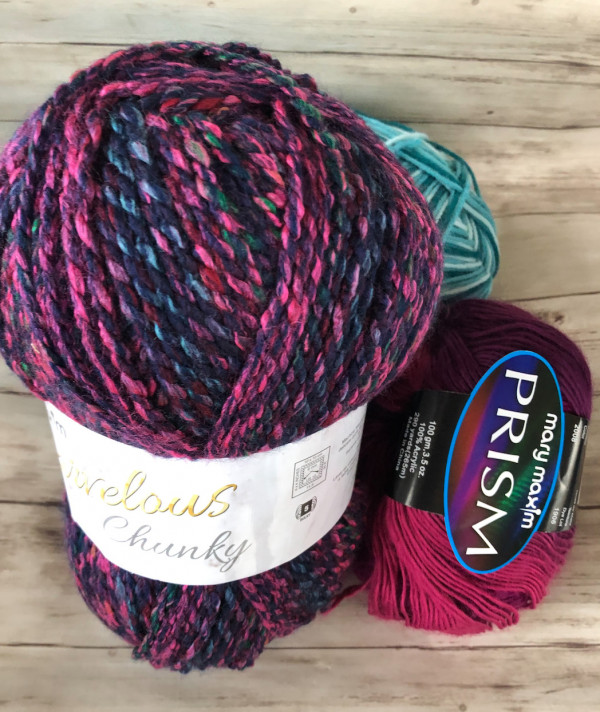

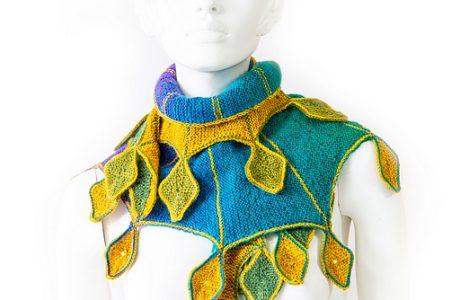
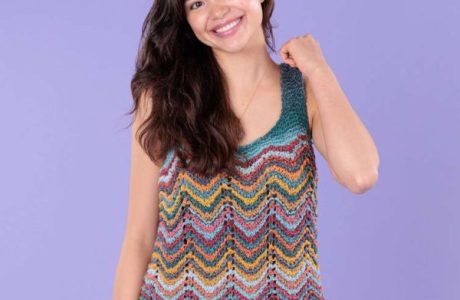

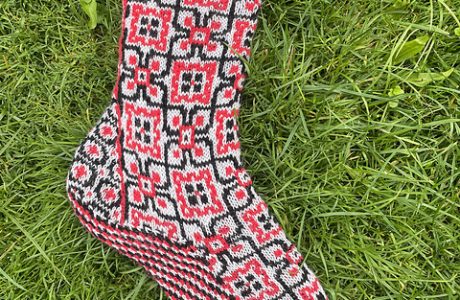

thank you for the post with great info!
It worries me when I see babies clothed in acrylic garments as it’s much harder for babies to regulate their temperature and while they may look warmly dressed, they could actually be cold. Plus, acrylic fibres, being a plastic, are bad for the environment.
Really helpful guide, thank you!! I have tons of ideas for how to use my yarn stash now 🙂
thank you for this information, it deals with questions I always had concerning my allergies & the use of Acrylics when I crochet.
Thank you for sharing.